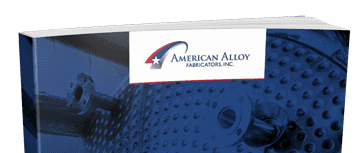The ideal welding technique for your project depends on your budget, the required weld quality, and the intended application of the final product. The intended application involves additional factors, such as welding position, materials, and location. The main types of welding techniques are MIG welding, TIG welding, stick welding, flux-cored welding, and laser welding. To avoid issues like burn-through and poor penetration, you should work with skilled welding providers that can get the job done right.
Learn more about the different types of welding and their various applications.
Types of Welding and Their Applications
Welders follow various welding procedure specifications based on the type of weld needed and the codes it is required to meet. Here is an overview of the main types of welding techniques and their respective applications.
MIG Welding
MIG welding, or metal inert gas welding, creates clean, strong welds. This is a popular welding style, especially in heavy-duty arc welding projects, because of its consistent strength and low maintenance requirements. Some of the most common applications of MIG welding include:
- Pipe welds, including pipe systems for potable water
- Municipal sewer and water system components
- Building railroad tracks and streetcar tracks
- Heavy metal components in automobiles
- Auto shop repairs
- Factory equipment
TIG Welding
Tungsten inert gas (TIG) welding creates high-accuracy welds using a non-consumable tungsten electrode. TIG welding is commonly used across industries that require metal bonding to create various equipment. It works best on thick pieces of stainless steel and other non-ferrous metals. Some of the most common applications include:
- Aerospace industry: NASA and other aeronautics organizations use TIG welding for building rockets and space shuttles.
- Automotive industry: TIG welding is commonly used in building cars, trucks, SUVs, and vans. Operators use it to prepare parts for future assemblies and while assembling engines.
- Construction industry: Construction teams can use on-site TIG welding to assemble building components, monuments, and other structures.
- Jewelry-making and other crafts: TIG welding machines are also used for various craft and jewelry applications, such as ring resizing, seam welding, repairing prong settings, and more.
Stick Welding
Shielded metal arc welding (SMAW), or stick welding, relies on a consumable electrode that produces an arc between the base material and the electrode. It’s a popular, convenient option for both small and large welds, and the equipment is highly portable. Stick welders can perform welding services in remote locations, connect hard-to-reach pieces in an assembly, or provide immediate, on-site repairs as needed.
Stick welding is built to handle outdoor use cases. Not only is the equipment convenient to carry and set up anywhere, but the flux-covered electrodes are wind-resistant. Some of the most common applications for stick welding are:
- Shipbuilding industry
- Outdoor construction
- Remote sites
- Emergency metal fixture repairs
Flux-Cored Welding
This style of welding uses a flux-filled tubular wire, which shields the weld. Flux-cored welding can work with mild steel, carbon steel, sheet steel, and cast iron. Common applications include:
- General repairs
- Shipbuilding
- Pipeline construction
- Underwater welds
- Cladding
- Steel hardfacing
Laser Welding
Laser welding tools use a high-precision laser to melt and join the metal substrates and create a fine, precise weld. It’s commonly used for manufacturing:
- Furniture
- Cabinets
- Appliances
- Tubes
- Trays
- Counters
- Ducts
- Medical instruments
- Architectural panels
- Turbine components
Factors to Consider When Choosing a Welding Technique
Because there are so many welding options, it’s important to think about the factors that matter most for each individual project, such as:
- The material and thickness of the parts being welded
- How quickly the welding must be completed
- The welding position in relation to other components of the assembly
- The power source and available current at the worksite
- Working conditions that may impact the weld, such as exposure to the elements
Professional Welding Services From American Alloy
With so many types of welding techniques to choose from, you need a welding partner who can not only help you select the right method but also complete the job with high-quality, timely results. Since 1989, American Alloy has been a leading provider of reliable welding services. We produce ASME-certified equipment and have a long history of working across multiple major industries, such as chemical, pharmaceutical, nutraceutical, cosmetics, biotech, and more. Contact us today to learn more about our capabilities.




Comments are closed